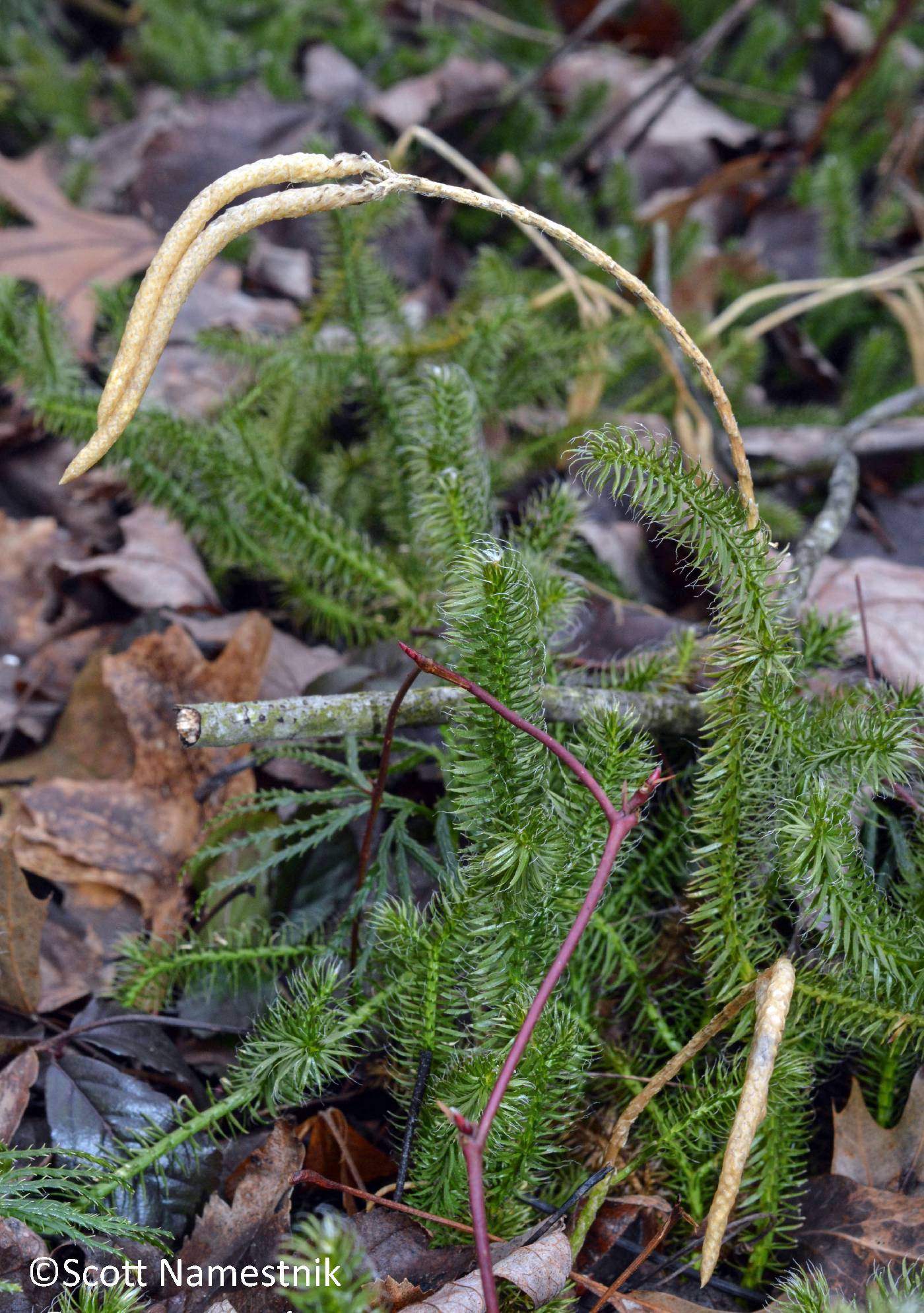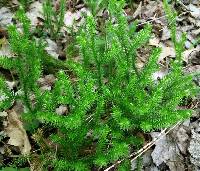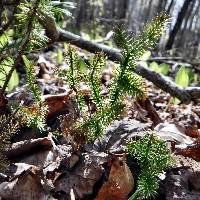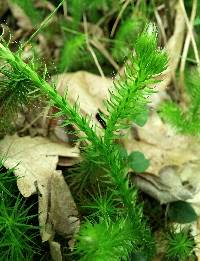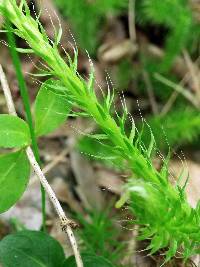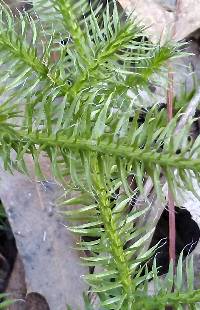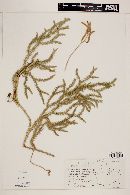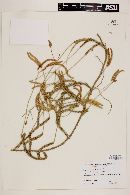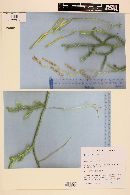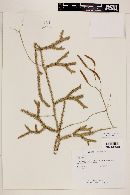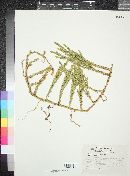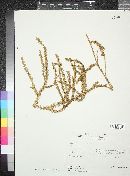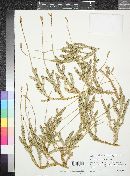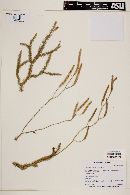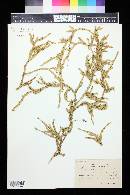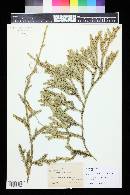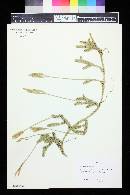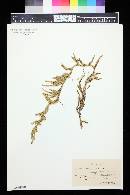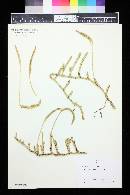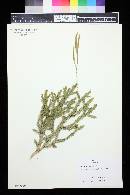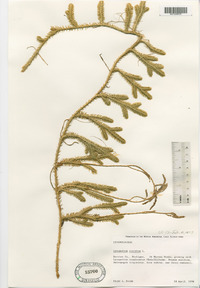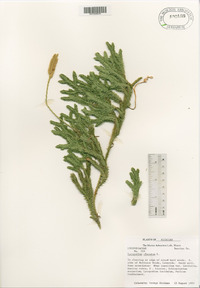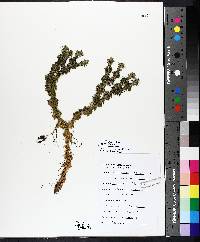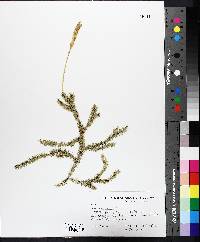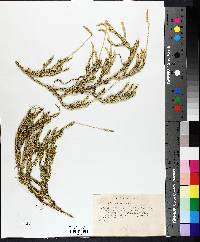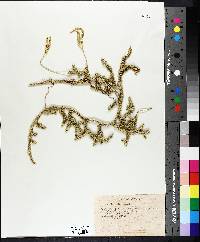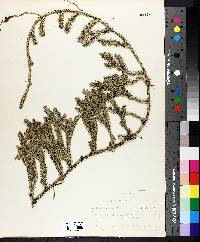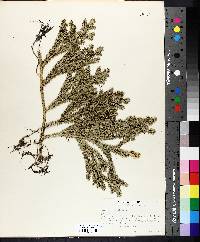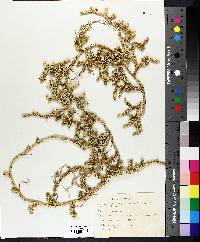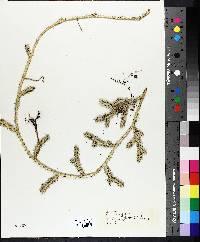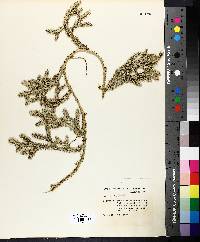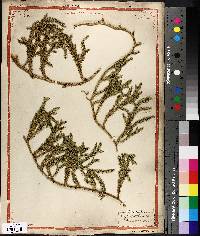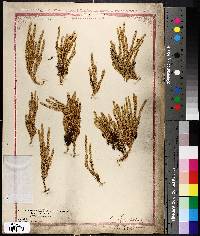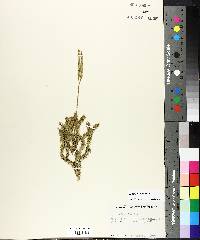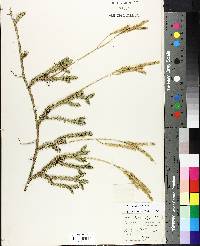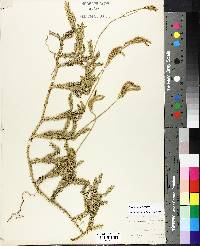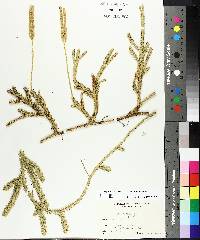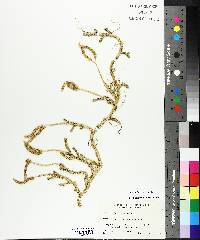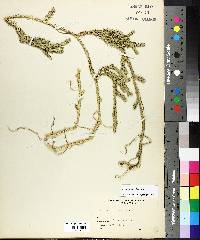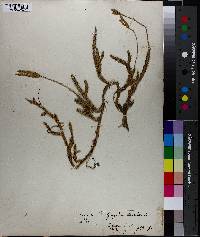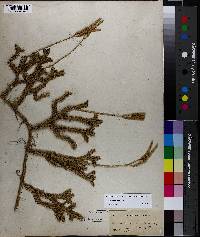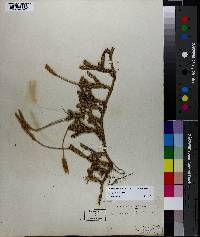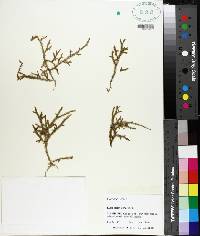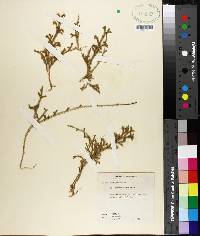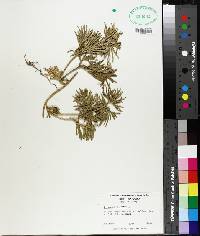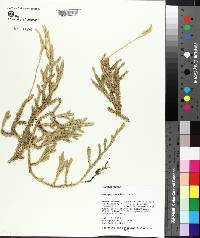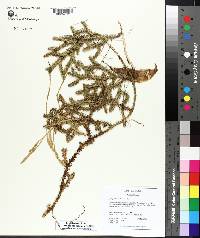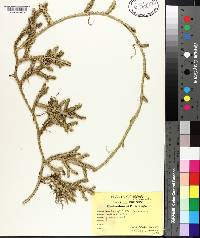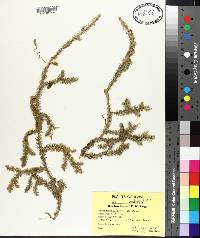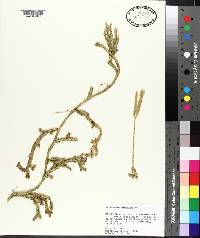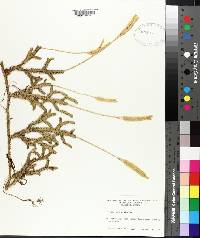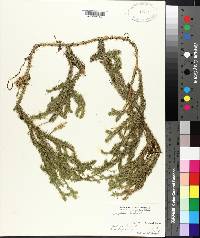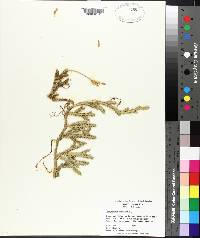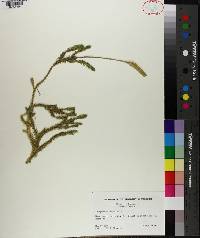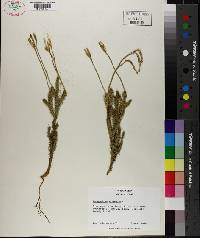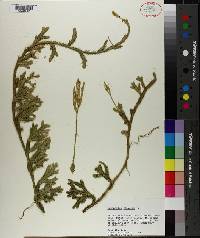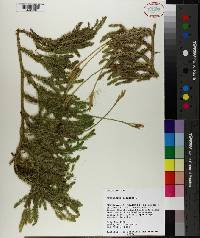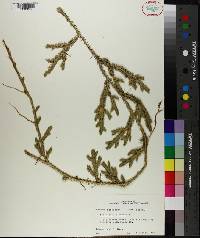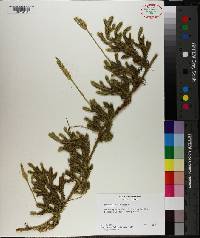
|
|
|
|
Family: Lycopodiaceae
Running Ground-Pine, more...common club-moss
[Lycopodium clavatum var. borbonicum Bory, moreLycopodium clavatum var. laurentianum Vict., Lycopodium clavatum var. subremotum Vict., Lycopodium clavatum var. tristachyum (Pursh) Hook., Lycopodium trichiatum var. borbonicum (Bory) Spring, Lycopodium trichiatum var. trichiatum] |
Horizontal stems on substrate surface. Upright shoots clustered, 0.6--1.2 cm diam., dominant main shoot with 3--6 branches mostly in lower 1/2. Lateral branchlets few and like upright shoots; annual bud constrictions abrupt, branchlets mostly spreading. Leaves spreading, often somewhat ascending in distal 1/3 of branches, medium green, linear, 4--6 X 0.4--0.8 mm; margins entire; apex with narrow hair tip 2.5--4 mm. Peduncles 3.5--12.5 cm, with remote pseudowhorls of appressed leaves, loosely branched into 2--5 alternate stalks, 0.5--0.8 cm. Strobili 2--5 on alternate stalks (if double, usually with stalks 5--8 mm), 15--25 X 3--6 mm. Sporophylls 1.5--2.5 mm, apex abruptly reduced to hair tip. 2 n = 68. Fields and woods; 100--1800 m; St. Pierre and Miquelon; B.C., Man., N.B., Nfld., N.S., Ont., P.E.I., Que., Sask.; Alaska, Calif., Conn., Ga., Idaho, Ill., Ind., Ky., Maine, Md., Mass., Mich., Minn., Mont., N.H., N.J., N.Y., N.C., Ohio, Oreg., Pa., R.I., Tenn., Vt., Va., Wash., W.Va., Wis.; Mexico; West Indies; Central America; South America; Europe; Asia; Africa; Pacific Islands. Plants found in eastern North America have been called Lycopodium clavatum var. clavatum ; those in the western part of the range, which have been called L . clavatum var. integrifolium Goldie, are distinguished by early shedding of the characteristic hairs on the leaf tips. Lycopodium dendroideum group
Perennial fern ally 5 - 18 cm tall Leaves: in six or more ranks, stalkless, spreading (sometimes more ascending in upper third of branches), non-toothed, medium green, 4 - 6 mm long, 0.4 - 0.8 mm wide, linear with very narrow, 2.5 - 4 mm long hair at tip. Rhizomes: trailing along surface of soil or substrate. Spores: hundreds per sac, all of one kind, 20 - 40 microns in diameter, thick-walled, veiny, three-sectioned (trilete) with pointed angles. The spores give rise to the gametophyte (the sexual phase of the plant), which is small, flat, disc- or button-shaped, underground, not green, but saprophytic, and inhabited by symbiotic fungi (mycorrhizae). Stems: upright, clustered, green, 0.6 - 1.2 cm diameter, with three to six branches in lower half, then those branches branching again into a few, somewhat spreading, lateral branchlets. Similar species: Lycopodium clavatum is extremely similar to a closely allied species that occurs just north of the Chicago Region (though it may occur in our Michigan county), L. lagopus. This species differs by having only one spore-bearing cone (strobilus) per very short stalk, ascending to appressed and smaller leaves (3 - 5 mm long), and only two to four main branches that are mostly upright. In the Chicago Region, L. clavatum is similar to L. dendroideum and L. hickeyi, but both of those species have buried rhizomes, and one to seven stalkless strobili at the top of many-branched, upright, tree-like shoots. Habitat and ecology: Very rare, mostly in sandy woods in our eastern counties. Occurence in the Chicago region: native Notes: Our plants of this species are the typical variety and can be named L. clavatum var. clavatum. The other variety, L. clavatum var. integrifolium, occurs along the Pacific northwest coast of North America. Though the sister taxon L. lagopus has never been reported in the Chicago Region, its range does overlap with L. clavatum in southwestern Michigan and eastern-central Wisconsin. Unlike our other genera in the Lycopodiaceae family, members of the genus Lycopodium do not hybridize with each other. In fact, the three major groups of species in North America (L. annotinum group, L. clavatum group, and L. dendroideum group) could even be split up and treated as separate subgenera (Wagner and Beitel 1993). Author: The Field Museum Horizontal stems superficial, elongate, arching and rooting at intervals, 2-3 mm thick, not dorsiventral, the lvs curved upwards; erect stems branched, to 2.5 dm; lvs mostly 10-ranked, uniform, linear-subulate, 4-7 נ0.5-0.8 mm, slightly or scarcely toothed, attenuate to a hyaline hair-like tip 2-3 mm; cones 1.5-11 cm, 3-7 mm thick, 1-6 on remotely bracteate peduncles 1.5-15 cm; sporophylls yellowish, broad-based, abruptly acuminate, with scarious erose margins; sporangia reniform, ca 1.5 mm wide; spores 28-36 microns in diameter, the sides convex, the commissural and outer faces angular-reticulate, the commissures not in furrows; 2n=68. Open dry woods and rocky places in acid soil; circumboreal, s. in e. U.S. to N.C., W.Va., Mich., and Io. Gleason, Henry A. & Cronquist, Arthur J. 1991. Manual of vascular plants of northeastern United States and adjacent Canada. lxxv + 910 pp. ©The New York Botanical Garden. All rights reserved. Used by permission. From Flora of Indiana (1940) by Charles C. Deam Indiana Coefficient of Conservatism: C = 4 Wetland Indicator Status: FAC ...... Diagnostic Traits: horizontal stems on soil surface; leaves in 6 or more ranks, their apex with hair tips 1-4 mm long; strobili pedunculate. |

